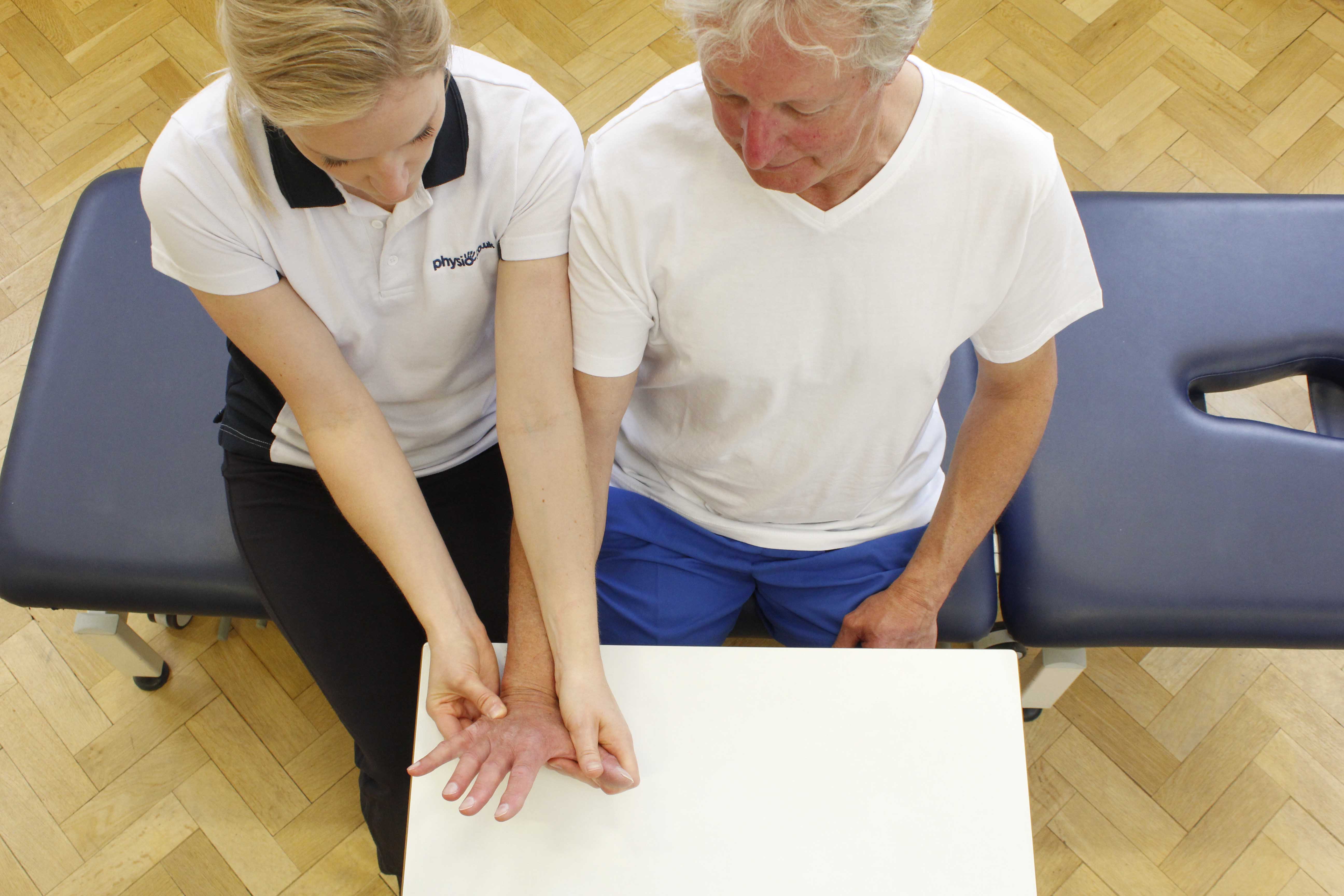Mirror therapy aims to change the way your brain thinks by carrying out movements and activities with the unaffected limb in the mirror. This will reduce ‘painful signals’ that the brain receives from the painful limb. Watching the unaffected limb reflected in the mirror stimulates both sides of the brain and corrects painful representations of the affected limb that develop when an injury or loss of limb occurs. Mirror therapy is often used for:
During mirror therapy a person places the affected limb into mirror box and out of sight and the unaffected limb in front of the mirror. The person then looks into the mirror on the side with the unaffected limb and makes "mirror symmetric" movements, such as clapping the hands. Your brain sees two ‘good’ images and is tricked into thinking that your injured hand is no longer painful. The brain then remembers that movement free of pain and order to gradually reduce
pain and increase
sensation.

Above: Hand massage and mobility exercises from a specialist physiotherapist
At Physio.co.uk our specialist physiotherapists use mirror therapy to relieve pain and facilitate normal movement in order to increases independence with everyday activities and improve quality of life. An assessment with one of our physiotherapists will find out if mirror therapy is suitable for you. Mirror therapy will aim to:
- Relieve pain and discomfort
- Restore movement
- Improve sensation
- Reduce muscle spasm
- Enhance independence with daily tasks such as washing, dressing, cleaning and gardening.
If you would like more information on how mirror therapy can help you or to book an appointment please call Physio.co.uk on
0330 088 7800, or alternatively
book online
 Above: Hand massage and mobility exercises from a specialist physiotherapist
Above: Hand massage and mobility exercises from a specialist physiotherapist
 0330 088 7800
0330 088 7800


































